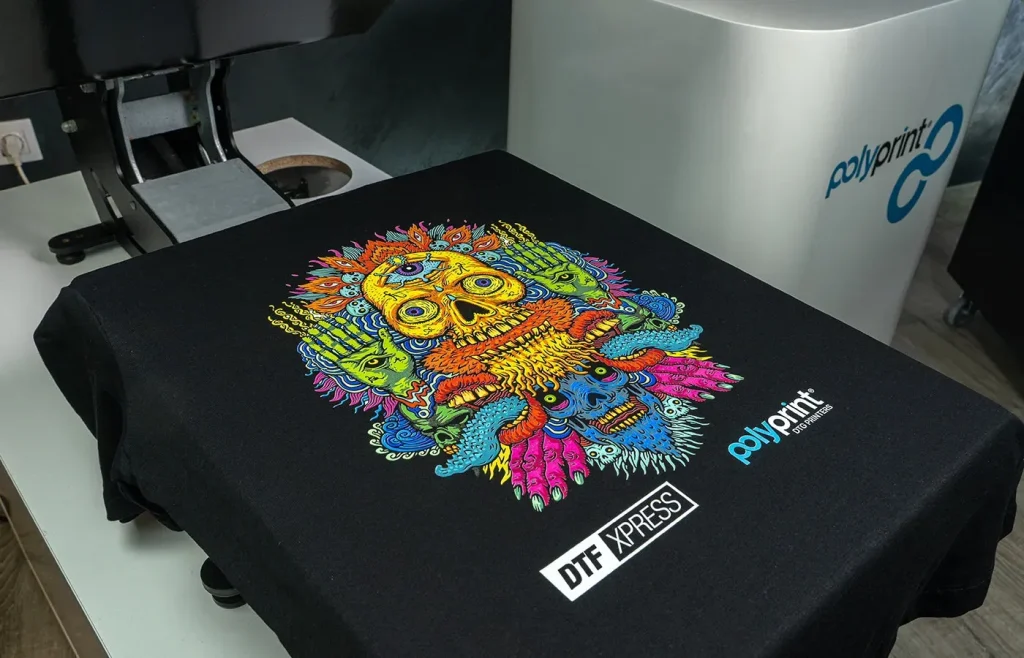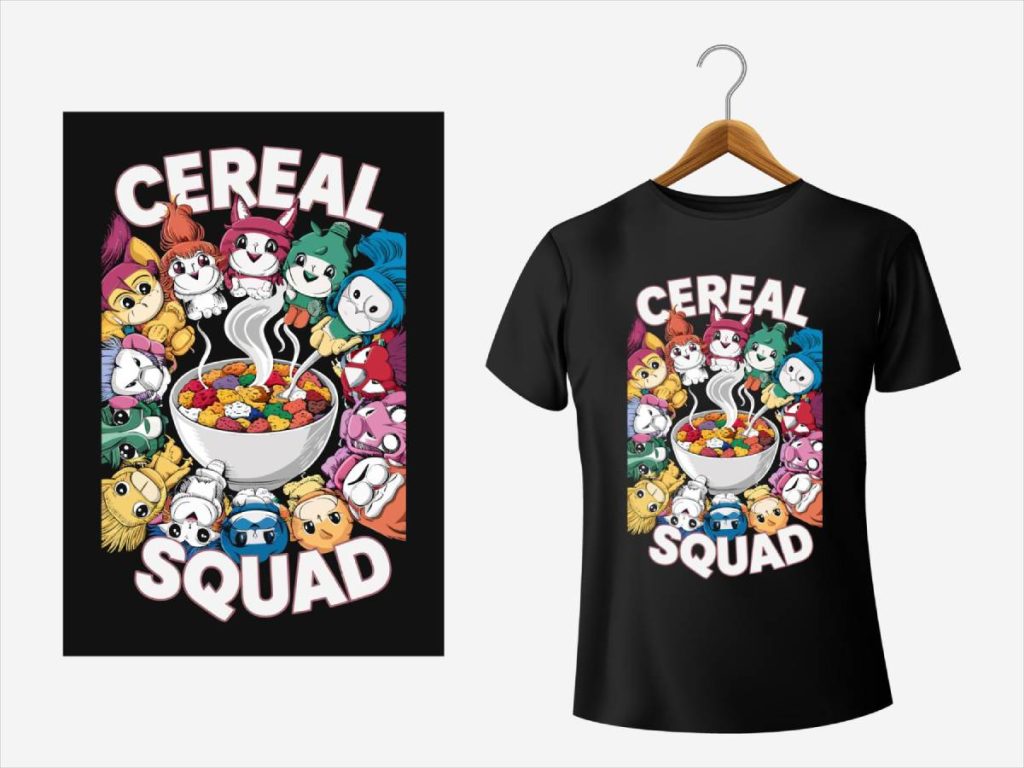In the rapidly advancing world of textile printing, DTF printing stands out as a revolutionary technique that is quickly gaining popularity. Short for Direct to Film printing, this innovative approach is steadily eclipsing traditional printing methods like screen printing and direct-to-garment printing. As businesses seek more efficient and cost-effective printing solutions, DTF printing offers a versatile alternative that caters to a variety of fabric and design needs. The benefits of this printing technology cannot be ignored, particularly for small businesses aiming to optimize production processes while maintaining high quality. In this article, we will explore the compelling reasons why DTF printing has become the go-to choice for many in the printing industry, setting a new standard for excellence.
Exploring contemporary textile printing, one can find that Direct to Film (DTF) printing has emerged as a frontrunner among printing technologies. This modern approach to fabric decoration is reshaping how designs are transferred to textiles, appealing especially to those familiar with traditional methods such as screen and direct-to-garment printing. DTF printing not only enhances versatility in fabric choices but also delivers vibrant visuals at a fraction of the cost of older printing techniques. As we delve further into this discussion, we will highlight how this printing methodology has been embraced as a practical yet innovative solution for businesses looking to transition from conventional printing paradigms.
Understanding DTF Printing Technology
DTF printing, or Direct to Film printing, is a revolutionary technique that bridges the gap between digital convenience and high-quality textile production. Utilizing a specialized film, this process allows for intricate and vibrant designs to be transferred efficiently onto various fabric types. Unlike traditional printing methods, such as screen printing or direct-to-garment (DTG) printing, DTF printing does not limit the artist’s creativity with respect to fabric choice or design complexity. This versatility is crucial for businesses that desire a broad range of customized products, enabling them to cater to a diverse clientele.
Furthermore, DTF printing employs a unique cold peel process, where the film is first printed with a design and then transferred onto the garment using heat and pressure. This process not only preserves the integrity of the original print but also enhances the color vibrancy and detail achievable. As a result, it has gained popularity in various niches, from fashion to promotional merchandise, where eye-catching visuals are vital for success.
The Cost-Effectiveness of DTF Printing
One of the standout characteristics of DTF printing is its cost-effectiveness, which poses a significant advantage over traditional methods like screen printing. The initial setup costs for DTF are considerably lower, making it a viable option for small businesses and start-ups looking to minimize upfront investments. This technology requires less equipment and reduces waste, leading to significant savings, especially for low-volume orders where traditional printing can be prohibitive.
Moreover, DTF printing eliminates the need for multiple screens or color separations, simplifying the printing process and ultimately saving time and labor costs. This streamlined approach also means that businesses can respond quickly to market trends or customer requests, enhancing productivity without compromising quality. Such financial benefits reiterate why DTF printing is increasingly becoming the go-to option for cost-conscious entrepreneurs.
Quality and Detail in DTF Printing
When it comes to print quality, DTF printing excels by delivering high-resolution images with complex gradients and a rich color palette. Compared to traditional screen printing, which is sometimes limited in its color combinations and detail due to the manual setup, DTF offers a more sophisticated approach that can achieve photographic quality. This makes it perfect for designs that require precision and intricate artwork, allowing brands to showcase their creativity without compromise.
The quality of DTF prints is further enhanced by the use of water-based inks, which not only offer vibrant colors but also contribute to the durability and softness of the final product. Unlike traditional inks that may feel heavy on the fabric, DTF prints maintain a lightweight finish that clients appreciate. This quality also resonates well with consumers who are increasingly favoring products that combine aesthetics with comfort.
Comparing Efficiency: DTF vs. Traditional Methods
In the fast-paced world of textile printing, efficiency is a key determinant of success. DTF printing emerges as a champion in this regard, particularly when compared to traditional methods such as screen printing. The preparation time for DTF printing is notably less than that required for screen printing, which involves screen creation and setup for each color used. This translates into quicker turnaround times, enabling businesses to fulfill orders rapidly and adapt to changing market demands with agility.
Moreover, DTF’s capability to handle smaller batches without the extensive setup required for traditional methods presents a significant advantage for businesses looking to offer limited edition or customizable products. As a result, companies adopting DTF technology find themselves better equipped to compete and thrive in today’s market where speed and quality are paramount.
Environmental Impact of DTF Printing
As eco-awareness continues to permeate consumer choices, the environmental impact of printing technologies is a critical factor for many businesses. DTF printing stands out for its environmentally friendly practices, employing mainly water-based inks that significantly reduce chemical waste compared to traditional printing methods. In an era where sustainability is a key purchasing decision for consumers, adopting DTF can enhance a company’s appeal and align with eco-conscious values.
In contrast, many traditional printing techniques utilize harmful solvents and chemicals that pose risks not only to the environment but also to the health of workers involved in the printing process. By choosing DTF printing, businesses can market their products as sustainably produced, potentially attracting a new customer base that values green initiatives. This environmental benefit is becoming a deciding factor for many companies as they strive for a more responsible operational model.
Future Prospects for DTF Printing Technology
The future of DTF printing technology appears promising as industry experts predict growth trends that will continue to reshape the textile printing landscape. Businesses are increasingly embracing DTF due to its unique advantages over traditional methods, such as enhanced speed, superior quality, and cost savings. As manufacturers invest more in research and development to refine DTF technology further, capabilities are expanding, paving the way for greater innovation in fabric printing.
With the continuous improvements in DTF technology, such as advancements in ink formulations and printing equipment, the potential for this method to dominate the printing industry is substantial. As consumer preferences shift toward high-quality, customizable products, DTF printing is likely to play a pivotal role in meeting these market demands, solidifying its place as a cornerstone of modern printing technology.
Frequently Asked Questions
What is DTF printing and how does it differ from traditional printing methods?
DTF printing, or Direct to Film printing, is a modern digital technique that transfers designs onto fabrics using a special film. Unlike traditional methods such as screen printing and direct-to-garment printing, DTF offers greater versatility with fabric choices and achieves high-resolution outputs with vibrant colors, setting it apart in the printing technology landscape.
Why is DTF printing considered a cost-effective printing solution?
DTF printing is deemed cost-effective due to its lower setup costs and efficiency for small runs or custom orders. This benefit particularly appeals to small business owners and entrepreneurs looking to minimize expenses while maximizing quality, especially when compared to traditional printing methods that often have higher initial costs.
How does DTF printing compare in quality to screen printing?
When comparing DTF printing to screen printing, DTF often provides superior quality. It achieves high-resolution outputs with smooth gradients and a broader color gamut, making it ideal for intricate designs. In many cases, users report that the fidelity of DTF prints outshines traditional screen printing results.
What are the environmental benefits of DTF printing over traditional methods?
DTF printing is more environmentally friendly than traditional printing methods as it utilizes predominantly water-based inks, significantly reducing its environmental impact. This aspect aligns with the growing consumer demand for sustainable printing options, contrasting against traditional methods that frequently use harsh chemicals.
Is DTF printing easier to operate than direct-to-garment printing?
Yes, DTF printing is generally easier to operate compared to direct-to-garment printing and screen printing. The user-friendly nature of DTF printers allows for quicker setup and reduced training time for staff, enhancing operational efficiency and speeding up production to meet customer demands.
What challenges does DTF printing face compared to traditional printing techniques?
Despite its advantages, DTF printing faces challenges such as the washing durability of prints and potential compatibility issues with inks and films. However, ongoing advancements in DTF technology are progressively addressing these concerns, improving its overall effectiveness and reliability in the printing market.
| Key Point | DTF Printing | Traditional Methods |
|---|---|---|
| Definition | Modern digital technique utilizing a special film for design transfer | Traditional processes like screen printing and DTG for fabric printing |
| Cost | Lower setup costs, ideal for small runs and custom orders | Higher setup costs, especially for small batch printing |
| Quality | High-resolution outputs, smooth gradients, broad color gamut | Often lower fidelity, limited range of colors and details |
| Ease of Use | User-friendly operation, quicker setups | Labor-intensive, complicated setups required |
| Market Trend | Rapid growth with a forecasted CAGR of over 20% | Stable but slower adoption rates and innovation |
| Environmental Impact | Uses water-based inks, more eco-friendly | Often relies on harsh chemicals, higher environmental impact |
Summary
DTF printing is revolutionizing the textile printing industry by providing a modern and efficient alternative to traditional methods. With its numerous advantages, including cost-effectiveness, superior quality, and ease of use, DTF is quickly becoming the go-to solution for businesses seeking to streamline their printing processes. The growing trend toward sustainability and environmental responsibility further strengthens DTF printing’s appeal. As these technologies continue to develop, companies that adopt DTF will likely thrive in a competitive marketplace.



